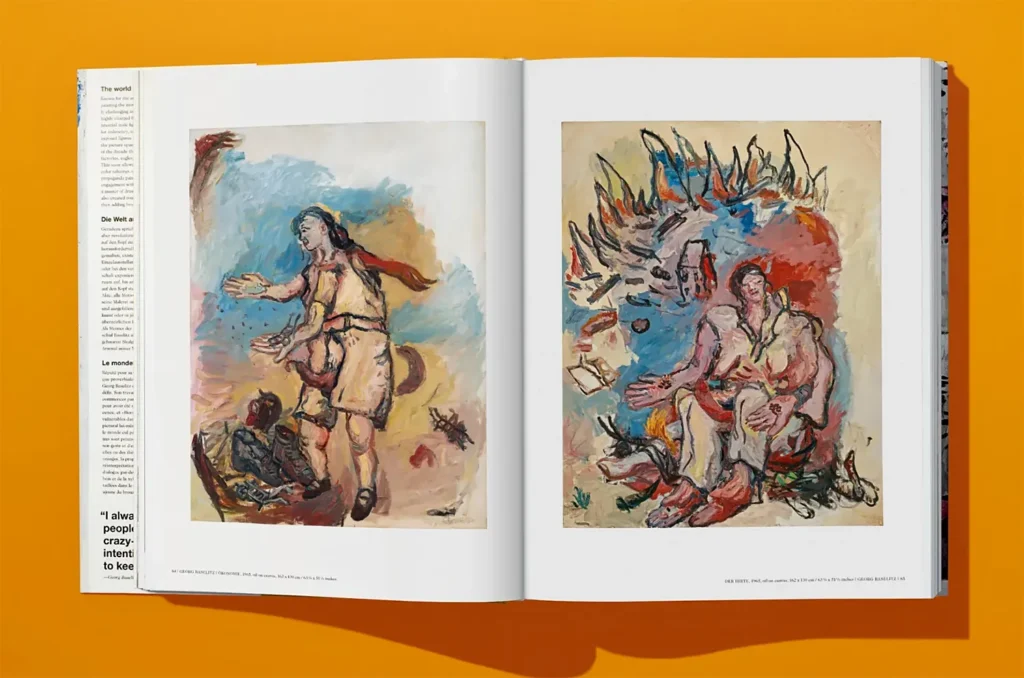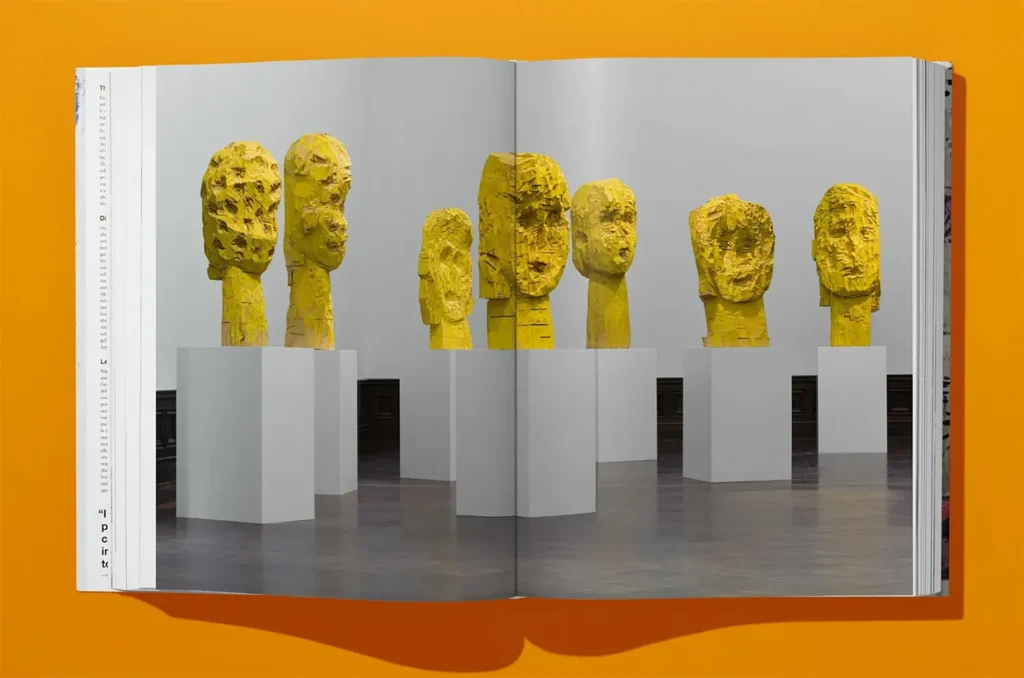Resistance through reversal
Georg Baselitz has irritated the art world with a seemingly simple but profound intervention: the reversal of the motif. Since the 1960s, he has been painting heads, figures, trees and symbols upside down – not as a gag, but as a deliberate gesture against convention. The space is dissolved, orders are shattered, the picture refuses to be read. Baselitz provoked early on with obscene depictions, broken heroic figures and fragmented pictorial zones. This was later followed by “remixes” of earlier works, in which he quoted his own pictorial worlds, deconstructed them and placed them in a new light – as a dialogue with himself across time.

© Taschen Verlag
The painting as a battlefield of opposites
What Baselitz paints is never harmonious. Colour is used to disturb, not to decorate. A red surface on the left demands a green one on the right; disharmony becomes a principle. His paintings refuse smooth perfection, they remain raw, torn open, fragmentary. In this aesthetic of the unfinished, the absence of beauty becomes an artistic statement. Baselitz brings orange-eaters and Soviet propaganda pictures into the same format, paints with his fingers or uses cork prints as absurd pointillism. This continues in his sculptures – roughly hewn with axe and saw, later also cast in bronze, but so lightly staged that they seem to contradict the material.

© Taschen Verlag
Irony as a constant in the work
Baselitz does not think in styles, but in breaks. His irony is directed against political dogmas as well as the art world. Whether with upside-down portraits or deliberately misplaced symbolism – such as equestrian motifs that form a swastika – he questions cultural orders without establishing new ones. The references to German history, heroic myths or art traditions are never affirmative, but reflections with a leap. Baselitz undermines meanings so consistently that no theory can fully explain them. Instead, an attitude emerges: a gnomic way of thinking that resists any form of appropriation.

© Taschen Verlag
A work beyond all schools
Baselitz does not belong to any school – nor does he found one. His art remains a solitaire, born out of personal experiences and historical ruptures. Two experiences from his childhood shaped him: the discovery of Slavic urns in the soil of his home village, which shook his German identity, and the observation of a boy who bit his arm while speaking – a physical feedback of feeling and language. Perhaps this is precisely the strength of Baselitz’s work: it does not think about art, it feels with it. The monograph does not stand still, it feels its way forward – like the work itself, which says more about its origins in every fragment than in every explanation.
Daten
| Original title | Georg Baselitz |
| Editor | Hans Werner Holzwarth |
| Publisher | Taschen Verlag |
| Cover | Hardcover |
| Pages | 616 |
| Language | German, English, French |
| Dimensions | 25 x 33.4 cm |
| ISBN | 978-3-8365-9910-8 |
| Price | 75 € |
Further information
Further information on the book Georg Baselitz (Advertising) can be found on the Taschen Verlag website.
Compliance
The book was kindly made available to us by the publisher. The presentation and rating of HYPERMADE remains independent of this and is based solely on the content of the book.

















